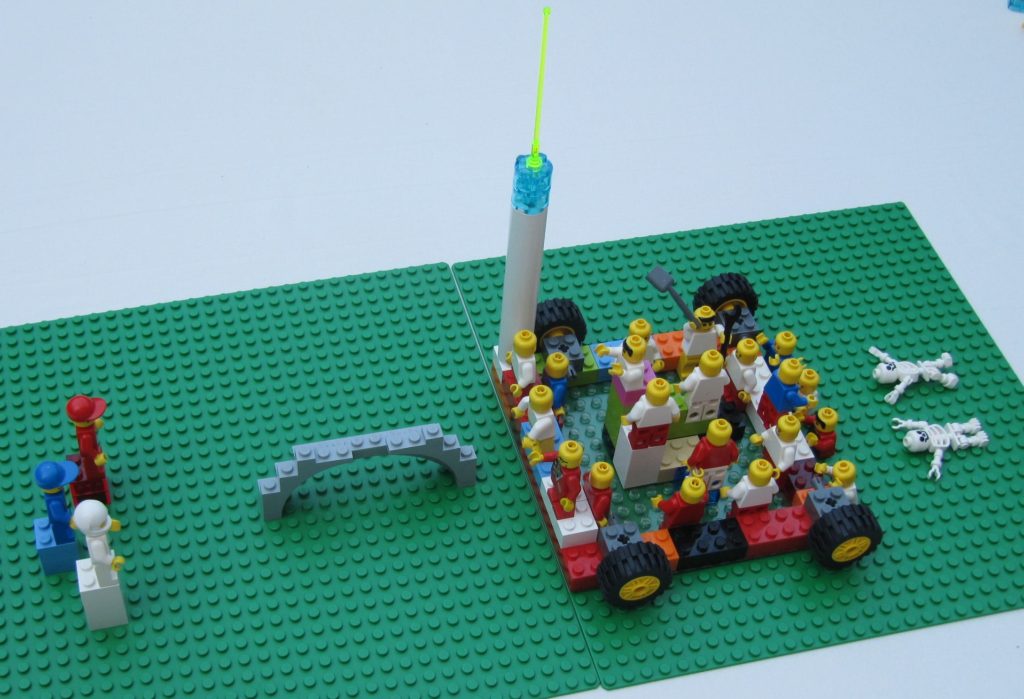This post identifies two visions for successful leadership within the Scrum Alliance. See also: Acceptance Tests and Concrete Actions (& Participants).
The group was divided into two teams. Each team independently went through the Strategic Play® visioning process:
- Every team member built a model representing their ideas to support thought leadership.
- In turn, each team member shared their ideas through the Lego model.
- The models and ideas were integrated into a shared model. The results are shown below.
Shared Model from Team 1

Some Notes:
- Low barriers to entry
- Transparent
- A source of ideas (not only source)
- Listening to outside ideas
- Building bridges to other communities (PMI, Kanban, etc)
- Welcome other community members into our community
- Stepping places for learning and different approaches
- Many people working to move SA forward with coordination of effort and needs
- Let go of past
- Have awesome tools and capabilities within our community
Shared Model from Team 2

Some Notes:
- Simple machine with inputs and outputs
- Inputs are multiple communities through individuals and “antennas”
- Collect ideas in central backlog with adequate levels of transparency
- Courageous Leadership to move ideas forward
- Other leaders to spread ideas
- Assisting people with entry to so they can grow
- Building bridges with other communities
Discussion
There were a number of key differences between the models. A few are discussed below.
What kind of leader? The inclusion of the Crown by one group was particularly challenging due to symbolic association to a king and absolute authority. Upon clarification, it was used to represent strong leadership that was inclusive of other voices and opinions. Something more than a facilitator and less than an authority.
What communities? The first group was much more oriented outwards to other parts of the Agile community and even wider. The second was focused more on the different communities or membership within the Scrum Alliance. So, both internal and external stakeholders are important.



